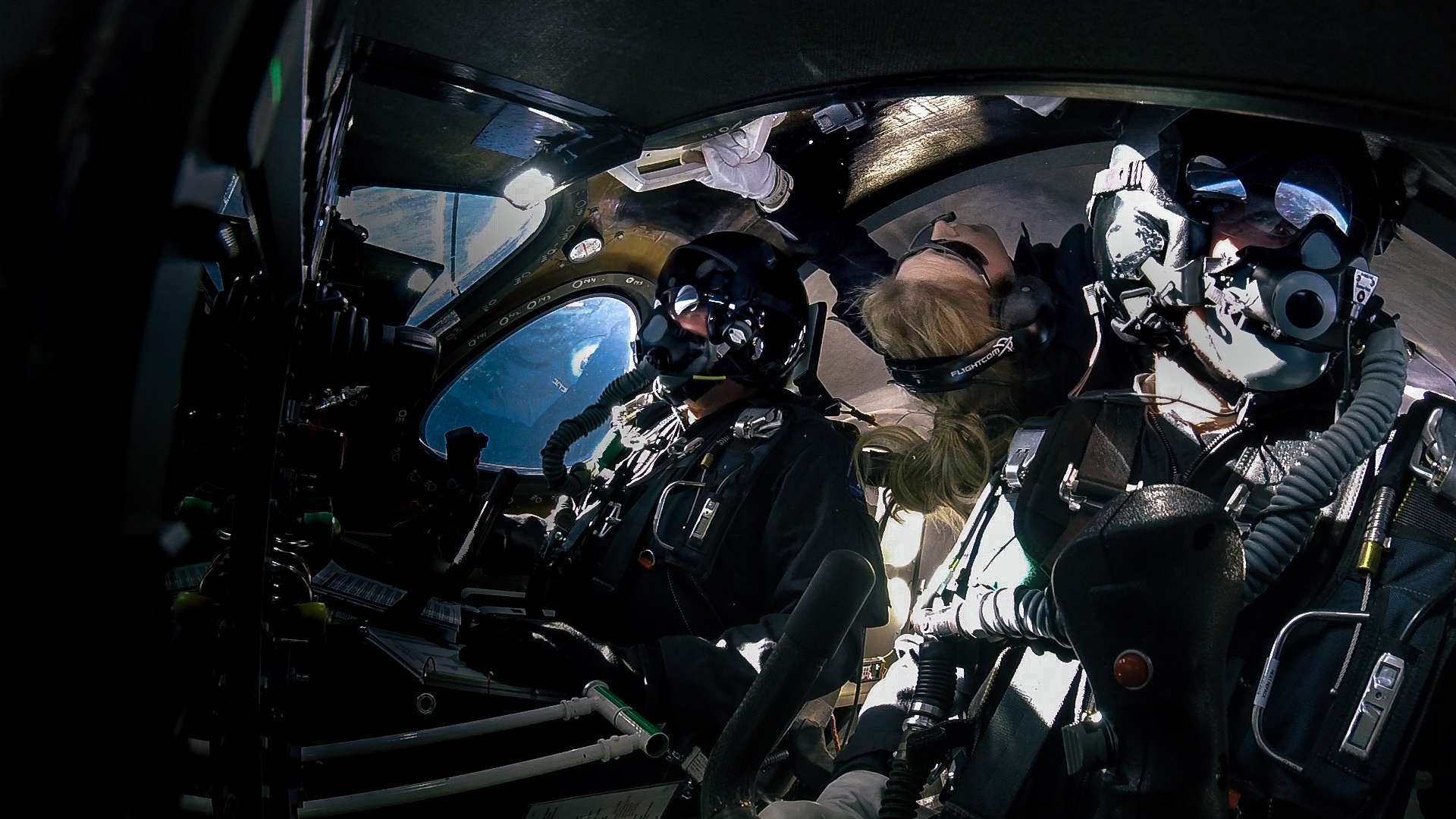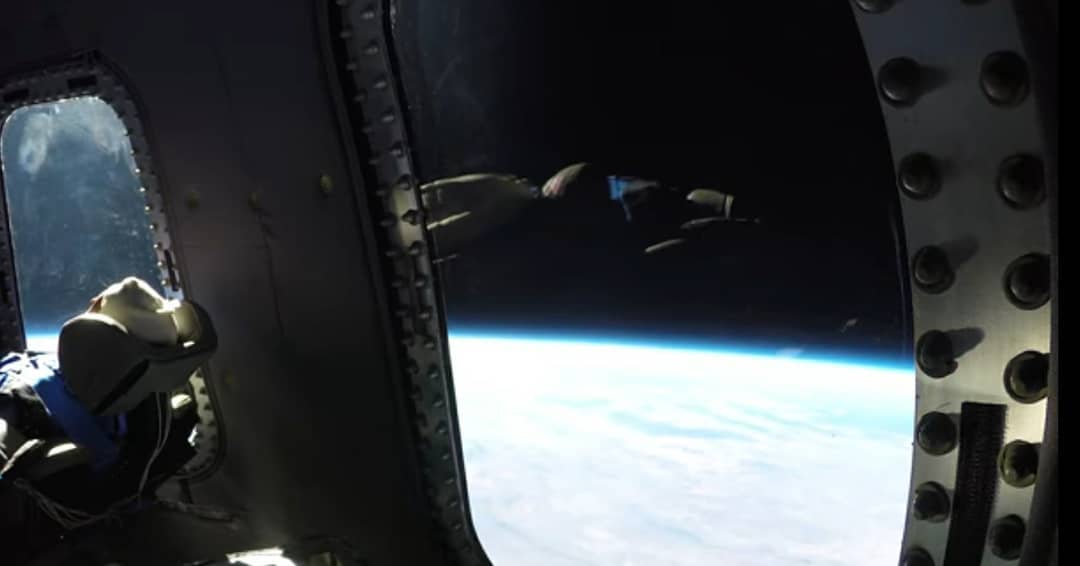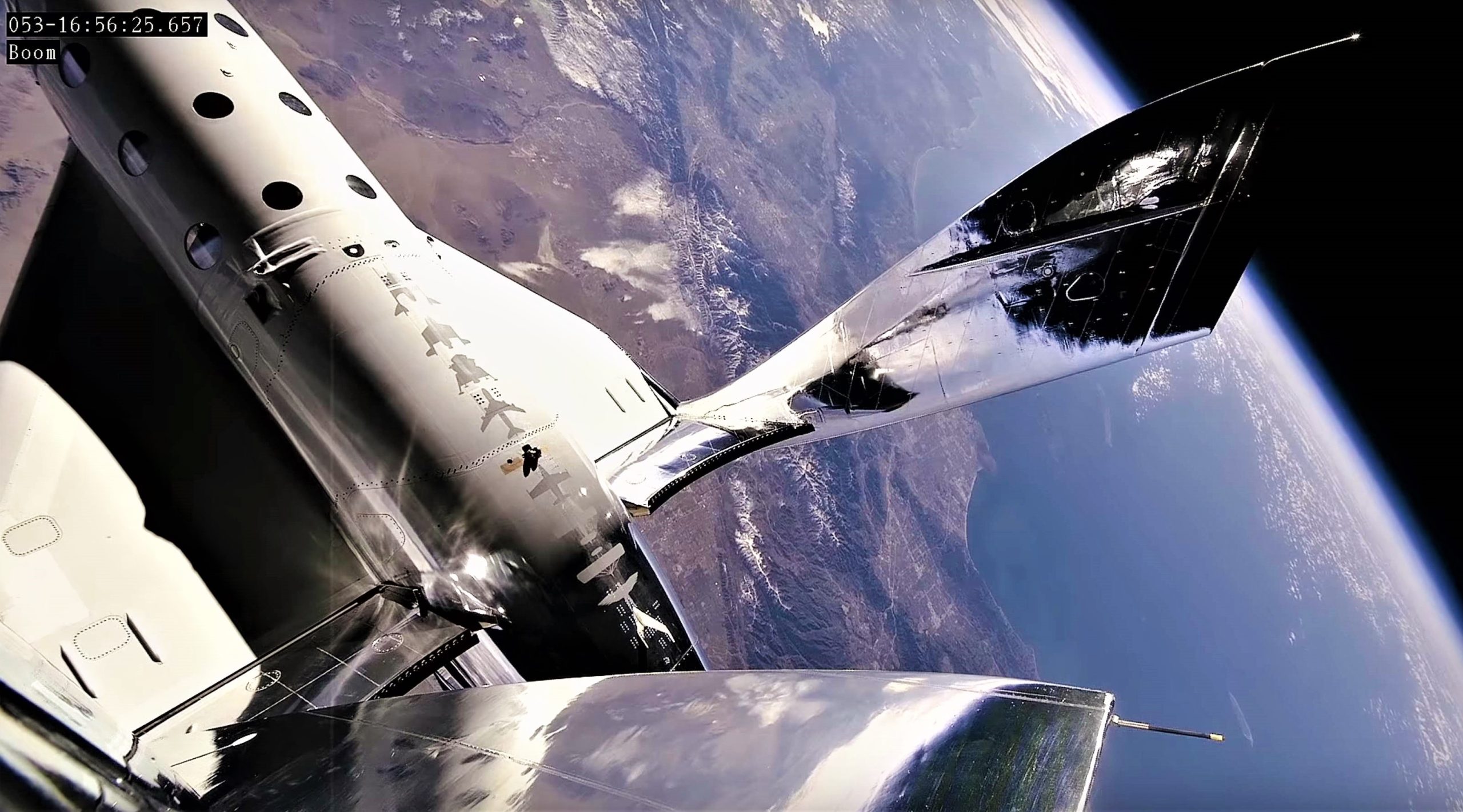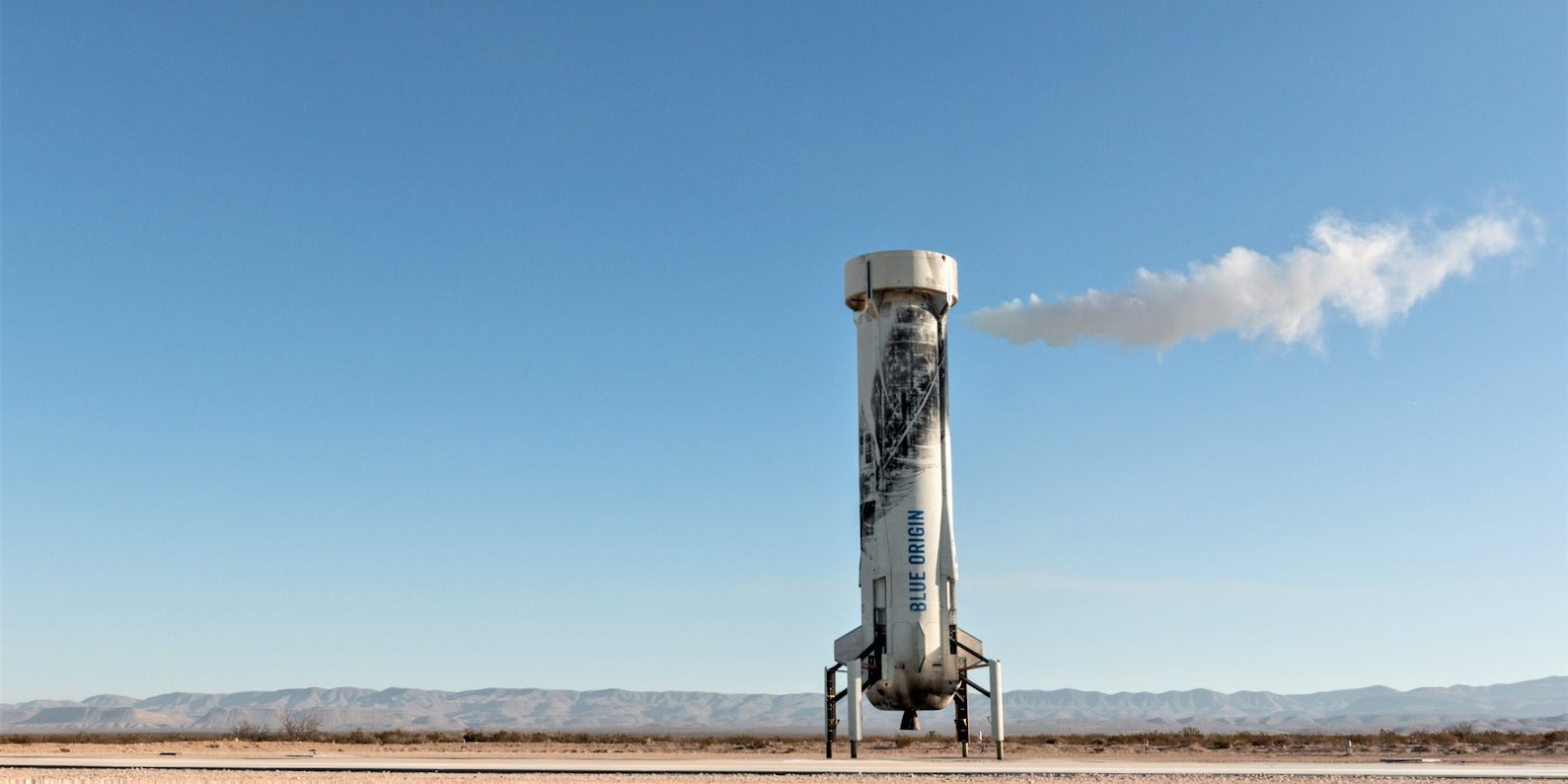News
DeepSpace: Virgin Galactic and Blue Origin banter about the fine print of suborbital tourism
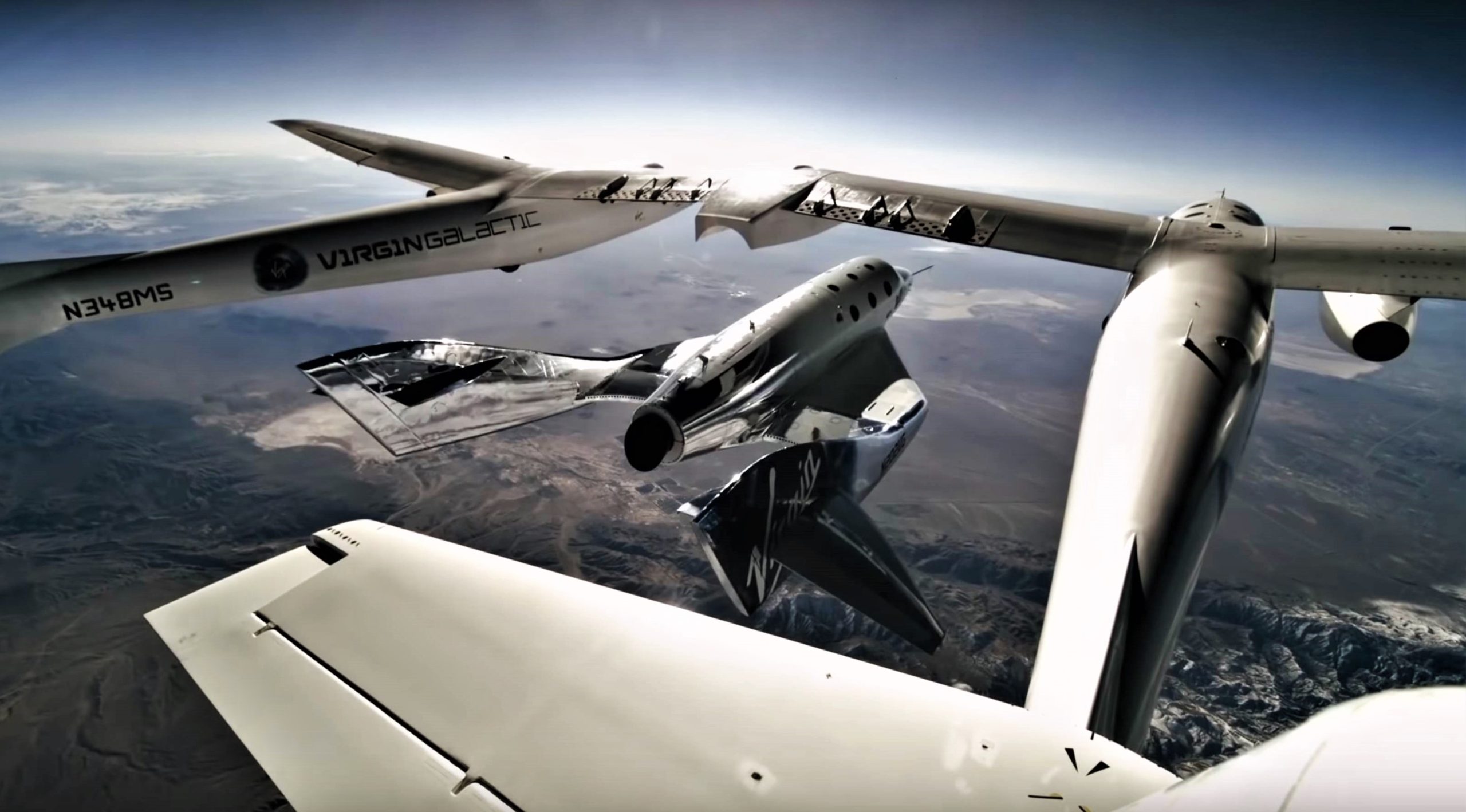
Welcome to the sixth edition of our new newsletter, DeepSpace! Each Tuesday, I’ll be taking a deep-dive into the most exciting developments in commercial space, from satellites and rockets to everything in between. If you’d like to receive DeepSpace and all of our newsletters and membership benefits,
Just shy of two months into 2019, the new year has been marked by a distinct focus on human spaceflight. Most of that focus has centered (as it should) on the relatively imminent launch debut of both SpaceX’s Crew Dragon and Boeing’s Starliner, crewed spacecraft designed and built to carry astronauts into orbit for NASA.
However, beyond SpaceX and Boeing, a considerable amount of noise is being made about the labors and relative progress of companies like Blue Origin and Virgin Galactic, both primarily focused on building a suborbital tourism market with their New Shepard and SpaceShipTwo launch vehicles. Coming as no surprise from companies aiming to create a sustainable market for a very expensive consumer product, both products have been dragged through a torturous maze of marketing hype in a process that has not really done the serious endeavor of human spaceflight any favors.
The Shepard and the Ship
- Virgin Galactic’s launch vehicle provider The Spaceship Company has been working to develop a suborbital platform to launch humans since the early 2000s, incorporated after billionaire Paul Allen funded a group of companies that ultimately won the Ansari X Prize in 2004.
- The Virgin/TSC approach involves a carrier aircraft (Known as White Knight Two) and a much smaller rocket plane (SpaceShipTwo) that is carried up to ~30,000 feet (9 km) before dropping and igniting its engine.
- SpaceShipTwo is meant to reach a maximum altitude of around 300,000 feet (~90 km) at a top speed of roughly Mach 3 (1000 m/s, 2200 mph) before gliding back to land on the same runway.
- In 2014, a combination of bad aeronautical design and pilot error triggered the in-flight failure of the first SpaceShipTwo, killing one of its two pilots. A member of the NTSB board that investigated the failure stated that Scale Composites (one of TSC’s parent companies) “put all their eggs in the basket of the pilots [flying the vehicle] correctly.”
- In a February 2019 video, Virgin Galactic CEO George Whitesides noted that “many aircraft are moving to being less piloted over time [but] our vehicle really is piloted to space.”
- SpaceShipTwo most recently launched on February 22nd.
- Blue Origin has yet to launch an actual human on New Shepard, a small, reusable single-stage rocket designed to loft a separate passenger capsule to approximately 100 km (330,000 ft).
- New Shepard has conducted ten launches since its 2015 debut, most of which saw the crew capsule and booster approximately reach that nominal 100 km apogee and nine of which concluded with a successful landing of the rocket’s booster.
- Capable of carrying up to six passengers, the Crew Capsule features a built-in abort motor that has been successfully tested, as well as a parachute system for a relatively soft landing at end-of-mission.


“Spacecraft” and “astronauts”
- Aside from the generally impressive technology itself and the undeniable challenges and risks of launch humans on fueled rockets, both Blue Origin’s New Shepard and Virgin Galactic’s SpaceShipTwo exist – albeit with different weights – to cater to a new market, suborbital or “space” tourism.
- While NASA is taking advantage of the opportunities to test small experiments with both vehicles as a partial platform, the real goal of both vehicles is to routinely launch paying customers.
- While Blue Origin has yet to announce ticket pricing, Virgin Galactic has priced their offering at $250,000 per person. In both cases, the end result will likely be a six-figure sum in return for an experience that should last no more than 10-60 minutes from start to finish, excluding buildup from screening and whatever training is deemed necessary.
- In other words, short of cases involving charity, tickets on New Shepard and SpaceShipTwo will almost indefinitely be reserved for less than 1% of humanity, those with income around $1M or more per year. This is by no means a bad thing and is, in fact, a proven first or second step in the direction of democratizing exotic or expensive technologies like air travel, computers, and even electric cars (namely Teslas).
- However, both companies are laser-focused on branding their vehicles as spacecraft and their passengers as astronauts, with Virgin Galactic being the worst offender in this regard.
- Aside from literally calling its 600+ prospective customers “Future Astronauts”, Virgin Galactic uses every chance it gets to hammer home its claim that SpaceShipTwo is a commercial spacecraft and its pilots true licensed, “wing”-ed astronauts.
- While passengers are not eligible for official FAA ‘astronauts’ wings’, it appears that Virgin will continue to market its passenger experience as one where customers will get to ‘travel to space’ and more or less become astronauts.
- Blue Origin describes its commercial offering as a “reusable suborbital rocket system designed to take astronauts and research payloads past the Kármán line – the internationally recognized boundary of space.”
- Both Blue and Virgin flights offer about ~4 minutes of weighlessness between launch and landing.
- Virgin Galactic Makes Space for Second Time in Ten Weeks with Three On Board
- For context, Alan Shepard – the US test pilot and namesake of New Shepard – was launched to an altitude of almost 190 km (120 mi) for what was recognized as the first US “spaceflight” and spent something like 5-10 minutes in microgravity and above the Karman Line (100 km).
- Used as a rough measure for a sort of fixed, arbitrary boundary between “Earth” and “Space”, reasonable arguments have been made in the last few years that the 100 km Karman Line could more accurately be placed around 70-90 km, in which case Virgin Galactic might actually be technically correct when saying that SpaceShipTwo and its passengers are traveling to space.
- Fewer than 570 humans in all of history have visited space (> 100 km), around 99.5% of which were astronauts that reached orbit. To call pilots of a spaceplane as distinctly suborbital as SpaceShipOne “astronauts” is palatable, particularly given the risks they face as test subjects and test pilots.
- However, to even hinting that tourists riding New Shepard or SpaceShipTwo to altitudes of ~80-100 kilometers are astronauts would do an immense disservice to those that pushed the limits of technology, risked their lives, or even died in pursuit of orbital spaceflight, the only kind of spaceflight with any significant utility.
- Much like cruise ship customers are not under the impression that they are coming along to ‘become sailors’, suborbital tourists are not astronauts. That being said, it’s not inaccurate to describe the experience they will have the privilege of being part of as something truly extraordinary, given that they will become one of a very select few humans to have actually launched on a rocket or seen the exaggerated curvature of Earth’s limb against the blackness of space.
- SpaceX’s first attempted orbital launch of Crew Dragon – a spacecraft designed to transport astronauts to and from the International Space Station – is set to occur as early as 2:49 am EST/07:49 UTC on March 2nd.
- This is the first truly serious date, thanks to the successful completion of a critical pre-launch review conducted by NASA and SpaceX.
- The second launch of Falcon Heavy could occur as early as late March
- Aside from DM-1 and Falcon Heavy Flight 2, it’s unclear what SpaceX mission will happen next, although a West Coast launch (the Radarsat Constellation Mission) is a strong candidate.
Mission Updates |
Photos of the Week:
After successfully sending the world’s first commercial lunar lander on its way to the Moon and placing Indonesian communications satellite PSN-6 in a high-energy Earth orbit, Falcon 9 B1048 completed its third launch and landing and returned to port on February 24th. The booster’s fourth mission, a Crew Dragon in-flight abort test, will likely destroy B1048, making this its last successful recovery. (c. Tom Cross)



News
Tesla’s northernmost Supercharger in North America opens

Tesla has opened its northernmost Supercharger in Fairbanks, Alaska, with eight V4 stalls located in one of the most frigid cities in the U.S.
Located just 196 miles from the Arctic Circle, Fairbanks’s average temperature for the week was around -12 degrees Fahrenheit. However, there are plenty of Tesla owners in Alaska who have been waiting for more charging options out in public.
There are only 36 total Supercharger stalls in Alaska, despite being the largest state in the U.S.
Eight Superchargers were added to Fairbanks, which will eventually be a 48-stall station. Tesla announced its activation today:
North America’s northernmost Supercharger Fairbanks, AK (8 stalls) opened to public. https://t.co/M4l04DZ6B5 pic.twitter.com/zyL6bDuA93
— Tesla Charging (@TeslaCharging) December 12, 2025
The base price per kWh is $0.43 at the Fairbanks Supercharger. Thanks to its V4 capabilities, it can charge at speeds up to 325 kW.
Despite being the northernmost Supercharger in North America, it is not even in the Top 5 northernmost Superchargers globally, because Alaska is south of Norway. The northernmost Supercharger is in Honningsvåg, Norway. All of the Top 5 are in the Scandanavian country.
Tesla’s Supercharger expansion in 2025 has been impressive, and although it experienced some early-quarter slowdowns due to V3-to-V4 hardware transitions, it has been the company’s strongest year for deployments.
🚨🚨 Tesla Supercharging had a HUGE year, and they deserve to be recognized.
🍔 Opened Tesla Diner, a drive-in movie theater with awesome, Chef-curated cuisine
🔌 Gave access to Superchargers to several EV makers, including Hyundai, Genesis, Mercedes-Benz, Kia, Lucid, Toyota,… pic.twitter.com/yYT2QEbqoW
— TESLARATI (@Teslarati) December 10, 2025
Through the three quarters of 2025, the company has added 7,753 stations and 73,817 stalls across the world, a 16 percent increase in stations and an 18 percent increase in stalls compared to last year.
Tesla is on track to add over 12,000 stalls for the full year, achieving an average of one new stall every hour, an impressive statistic.
Recently, the company wrapped up construction at its Supercharger Oasis in Lost Hills, California, a 168-stall Supercharger that Tesla Solar Panels completely power. It is the largest Supercharger in the world.
News
Tesla hints toward Premium Robotaxi offering with Model S testing
Why Tesla has chosen to use a couple of Model S units must have a reason; the company is calculated in its engineering and data collection efforts, so this is definitely more than “we just felt like giving our drivers a change of scenery.”

Tesla Model S vehicles were spotted performing validation testing with LiDAR rigs in California today, a pretty big switch-up compared to what we are used to seeing on the roads.
Tesla utilizes the Model Y crossover for its Robotaxi fleet. It is adequately sized, the most popular vehicle in its lineup, and is suitable for a wide variety of applications. It provides enough luxury for a single rider, but enough room for several passengers, if needed.
However, the testing has seemingly expanded to one of Tesla’s premium flagship offerings, as the Model S was spotted with the validation equipment that is seen entirely with Model Y vehicles. We have written several articles on Robotaxi testing mules being spotted across the United States, but this is a first:
🚨 Tesla is using Model S vehicles fitted with LiDAR rigs to validate FSD and Robotaxi, differing from the Model Ys that it uses typically
Those Model Y vehicles have been on the East Coast for some time. These Model S cars were spotted in California https://t.co/CN9Bw5Wma8 pic.twitter.com/UE55hx5mdd
— TESLARATI (@Teslarati) December 11, 2025
Why Tesla has chosen to use a couple of Model S units must have a reason; the company is calculated in its engineering and data collection efforts, so this is definitely more than “we just felt like giving our drivers a change of scenery.”
It seems to hint that Tesla could add a premium, more luxury offering to its Robotaxi platform eventually. Think about it: Uber has Uber Black, Lyft has Lyft Black. These vehicles and services are associated with a more premium cost as they combine luxury models with more catered transportation options.
Tesla could be testing the waters here, and it could be thinking of adding the Model S to its fleet of ride-hailing vehicles.
Reluctant to remove the Model S from its production plans completely despite its low volume contributions to the overall mission of transitioning the world to sustainable energy, the flagship sedan has always meant something. CEO Elon Musk referred to it, along with its sibling Model X, as continuing on production lines due to “sentimental reasons.”
However, its purpose might have been expanded to justify keeping it around, and why not? It is a cozy, premium offering, and it would be great for those who want a little more luxury and are willing to pay a few extra dollars.
Of course, none of this is even close to confirmed. However, it is reasonable to speculate that the Model S could be a potential addition to the Robotaxi fleet. It’s capable of all the same things the Model Y is, but with more luxuriousness, and it could be the perfect addition to the futuristic fleet.
News
Rivian unveils self-driving chip and autonomy plans to compete with Tesla
Rivian, a mainstay in the world of electric vehicle startups, said it plans to roll out an Autonomy+ subscription and one-time purchase program, priced at $49.99 per month and $2,500 up front, respectively, for access to its self-driving suite.
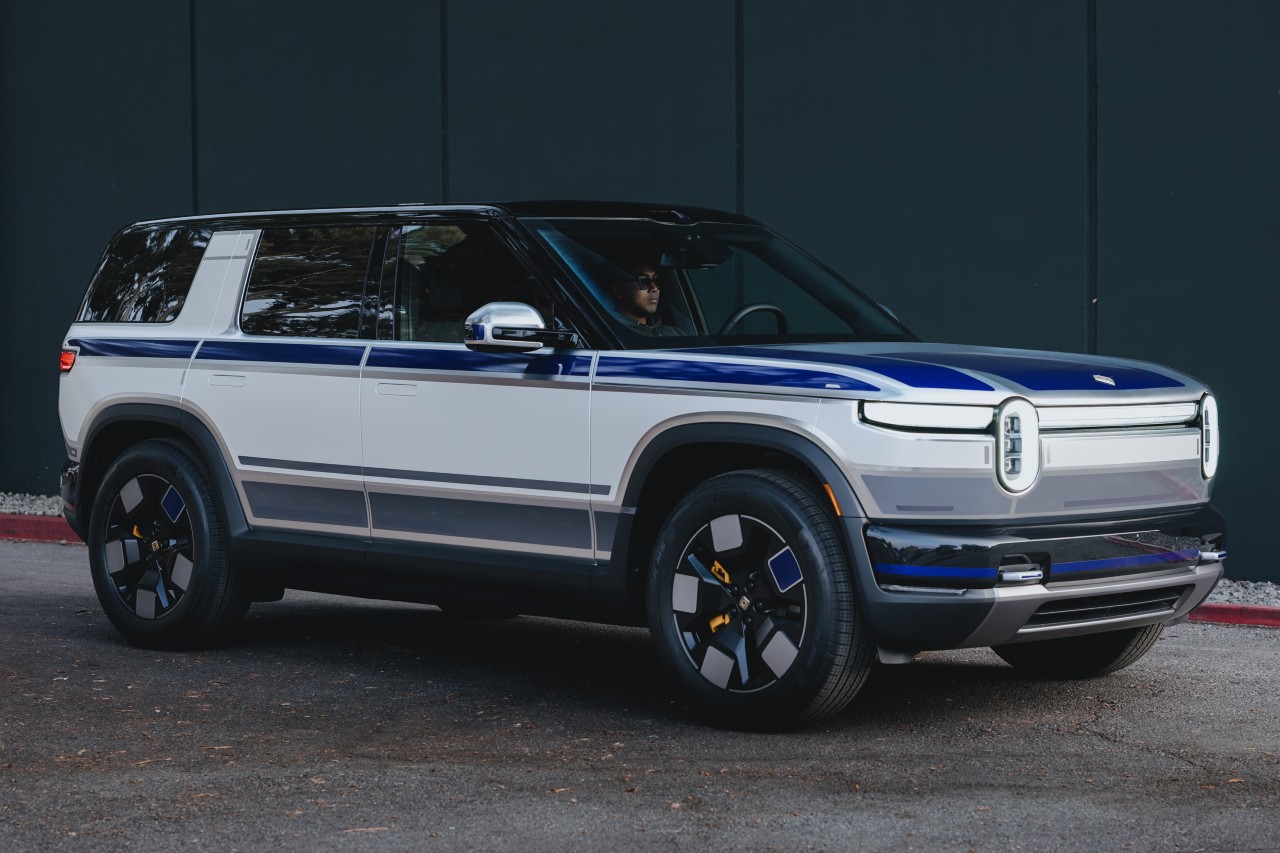
Rivian unveiled its self-driving chip and autonomy plans to compete with Tesla and others at its AI and Autonomy Day on Thursday in Palo Alto, California.
Rivian, a mainstay in the world of electric vehicle startups, said it plans to roll out an Autonomy+ subscription and one-time purchase program, priced at $49.99 per month and $2,500 up front, respectively, for access to its self-driving suite.
CEO RJ Scaringe said it will learn and become more confident and robust as more miles are driven and it gathers more data. This is what Tesla uses through a neural network, as it uses deep learning to improve with every mile traveled.
He said:
“I couldn’t be more excited for the work our teams are driving in autonomy and AI. Our updated hardware platform, which includes our in-house 1600 sparse TOPS inference chip, will enable us to achieve dramatic progress in self-driving to ultimately deliver on our goal of delivering L4. This represents an inflection point for the ownership experience – ultimately being able to give customers their time back when in the car.”
At first, Rivian plans to offer the service to personally-owned vehicles, and not operate as a ride-hailing service. However, ride-sharing is in the plans for the future, he said:
“While our initial focus will be on personally owned vehicles, which today represent a vast majority of the miles to the United States, this also enables us to pursue opportunities in the rideshare space.”
The Hardware
Rivian is not using a vision-only approach as Tesla does, and instead will rely on 11 cameras, five radar sensors, and a single LiDAR that will face forward.
It is also developing a chip in-house, which will be manufactured by TSMC, a supplier of Tesla’s as well. The chip will be known as RAP1 and will be about 50 times as powerful as the chip that is currently in Rivian vehicles. It will also do more than 800 trillion calculations every second.
Meet the Rivian Autonomy Processor.
Fast, smart, scalable and purpose-built for autonomous driving and the world of physical AI. Hitting the open road in 2026. pic.twitter.com/0wYXi5WKy7
— Rivian (@Rivian) December 11, 2025
RAP1 powers the Autonomy Compute Module 3, known as ACM3, which is Rivian’s third-generation autonomy computer.
ACM3 specs include:
- 1600 sparse INT8 TOPS (Trillion Operations Per Second).
- The processing power of 5 billion pixels per second.
- RAP1 features RivLink, a low-latency interconnect technology allowing chips to be connected to multiply processing power, making it inherently extensible.
- RAP1 is enabled by an in-house developed AI compiler and platform software
As far as LiDAR, Rivian plans to use it in forthcoming R2 cars to enable SAE Level 4 automated driving, which would allow people to sit in the back and, according to the agency’s ratings, “will not require you to take over driving.”
More Details
Rivian said it will also roll out advancements to the second-generation R1 vehicles in the near term with the addition of UHF, or Universal Hands-Free, which will be available on over 3.5 million miles of roadway in the U.S. and Canada.
More than any other feature, our owners have asked for more hands-free miles.
With Universal Hands-Free, you can now enjoy hands-free assisted driving on any road with clearly defined lanes. That’s roughly 3.5 million miles in the U.S. and Canada.
Look for it in our next… pic.twitter.com/ZFhwVzvt6b
— Rivian (@Rivian) December 11, 2025
Rivian will now join the competitive ranks with Tesla, Waymo, Zoox, and others, who are all in the race for autonomy.
